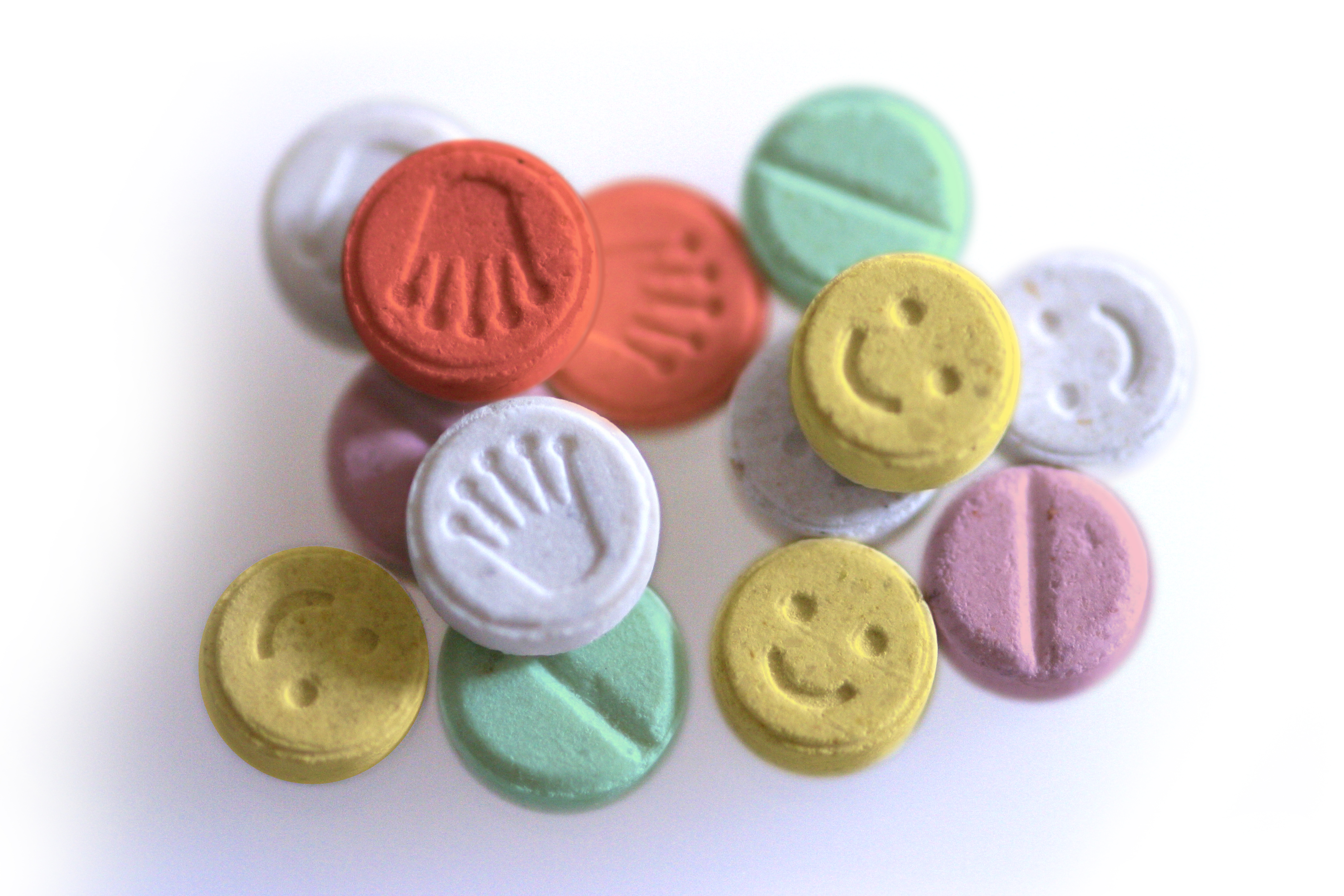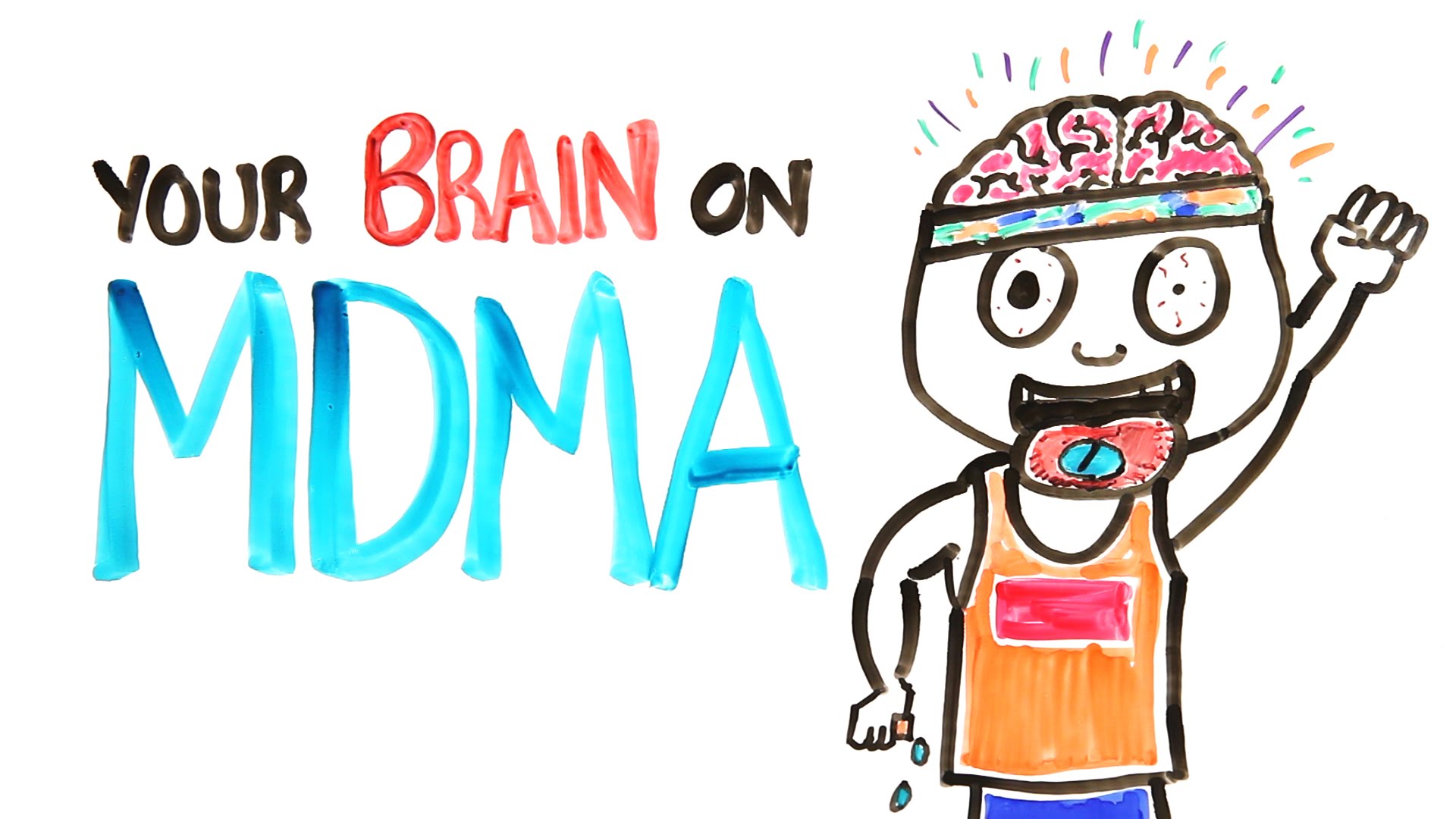Contents
What is Ecstasy?
Ecstasy or MDMA or chemically 3,4-Methylenedioxymethamphetamine, the drug which is also known on street as: XTC, Adam, hug drug, exer, beans or love drug, is a synthetic, psychoactive drug which is chemically similar to the stimulant drug methamphetamine and the hallucinogen mescaline.
This illegal substance has both stimulant and psychedelic properties. Ecstasy produces energizing effects as well as distortions in perception and time and improves enjoyment, empathy, euphoria, and heightened sensations of tactile experiences.
It is most commonly used orally in a form of tablet, but it can also be snorted or smoked. This recreational drug has no medical uses. Clinical studies are testing MDMA therapeutic potential for post-traumatic stress disorder and anxiety associated with terminal phase of cancer. Ecstasy is one of the 4 most widely used illegal drugs in the U.S.A.
Different names for ecstasy pills
- Drop, Double Drop
- Molly (street name for “molecular”)
- Thizzing
- Flip or Flipping
- Roll, Rolling
- Cuddle Puddle, E-Puddle
- E-tard
- Raver, Raving
How does Ecstasy works?
MDMA improve releasing of neurotransmitters in the brain such as: serotonin, norepinephrine, and dopamine. It enters neurons through monoamine transporters. Inside cell, MDMA blocks the vesicular monoamine transporter, which results in increased intracellular concentrations of serotonin, norepinephrine, and dopamine and induces their release through chemical reactions known as phosphorylation.
MDMA may also act as a weak agonist of 5-HT1 and 5-HT2 receptors. This drug unusual and high entactogenic effects have been theorized to be the result of oxytocin hormone indirect secretion through activation of the serotonin system. It is known that oxytocin is released during events like hugging, orgasm and childbirth, and is believed to facilitate establishment of trust and bonding.
Ecstasy side effects
- The immediate adverse effects of Ecstasy may include: dehydration, bruxism (grinding and clenching of the teeth), hyperthermia, increased perspiration and sweating, increased wakefulness or insomnia, increased heart rate and blood pressure, nausea and vomiting, diarrhea, loss of appetite, erectile dysfunction and mydriasis.
- Loss of memory and cognition issues: Chronic Ecstasy users may perform more poorly on certain types of memory and cognitive tasks. However, in most cases it is due to the use of other drugs in combination with Ecstasy. One study conducted in 2011 reported limited cognitive decline in Ecstasy users.
- Physical adverse effects: In high doses, this drug will interfere with the body’s ability to regulate temperature. Rarely this can lead to an increase in body temperature which may result in kidney, liver and cardiovascular system failure, coma and sudden death.
- Psychological Effects: These side effects can include depression, confusion, drug craving, sleep problems and severe anxiety. These problems may sometimes last for days or weeks after taking Ecstasy.
- Neurotoxicity: Animal studies connected Ecstasy long-term exposure to neuron’s damage that may cause changes in mood, thinking, and judgment. A study on nonhuman primates showed Ecstasy exposure for only 4 days caused serotonin nerve terminals damage that was evident 6 to 7 years later. While similar neurotoxicity has not been found in humans, the wealth of animal research indicating this drug unsafe properties.
How long does Ecstasy stay in your system?
When taken by mouth, effects start after 30–45 minutes and usually last about 3–5 hours. Ecstasy reaches peak concentrations in the blood between 1.5 to 3 hours after administration. It is then slowly metabolized and eliminated, with 3, 4-Methylenedioxymethamphetamine and its metabolites decreasing to half of their peak concentration over the next several hours.
The elimination half-life time of ecstasy is by some data approximately 7 hours, while other data suggest half-life of 8 to 9 hours. If half-life time is 7 hours it can be calculated that in normal situations will take a total of 1.6 days for ecstasy to be eliminated in whole from the body. Otherwise, if a half-life time is 8 to 9 hours it may take 2 days for the drug to be completely eliminated.
Though, in most persons Ecstasy will be cleared within 2 days, nearly everyone can expect the drug to have been eliminated within 3 days. However, if alkalinity of urine exists, it can prolong MDMA excretion, increasing its half-life time for about 16 and 31 hours. Furthermore, MDMA’s metabolite named HMMA (4-hydroxy-3-methoxy-methamphetamine) is thought to remain in the body for nearly 33 hours longer than MDMA.
Factors that may affect on how long Ecstasy (MDMA) stays in the body
There are many factors that may have effects on MDMA metabolism and excretion, and thus the time drug stay in the system. While some persons may be able to pass MDMA drug test within 2 days after administration, yet other may fail. Those factors include:
- Age. Younger individuals usually have faster metabolism, they are physically more active, and usually have better health than elderly. Elderly individuals of ages 60+ usually have reduced blood flow to their kidneys and liver, have decreased function of liver and kidneys, and commonly they are taking more drugs for their diseases that may interact with MDMA. As a result, it takes longer time for older individuals to metabolize and eliminate drugs like MDMA from their body.
- Genetic factors. Genes may affect the speed of drug metabolism. Since MDMA is metabolized mainly in the liver by CYP2D6 enzyme, genetic variants of this enzyme may affect the rate of MDMA degradation. MDMA is converted into the metabolite DHMA by metabolic reaction with CYP2D6 through the chemical reaction of demethylenation, but those who are poor metabolizers are unable for this transformation. So certain people may take longer time than usual to metabolize MDMA, while others may faster metabolize and clear this drug from their body.
- Liver and kidney function. Individuals with some liver or kidney disease and poor functioning of these organs may not eliminate MDMA adequately. This result in a prolonged and less efficient metabolism and excretion and extended time in which this drug stays in the body.
- Body mass index (BMI). BMI is calculated by height and weight as parameters. Generally, the higher the dose of MDMA is taken in proportion to lower BMI the slower will be elimination of the drug. Taller and weightier individuals should have easier time of processing MDMA standard doses compared to smaller and low weight individuals.
- Other medicines or supplements. Many drugs may interfere with the MDMA metabolism. Drugs such as: fluoxetine, paroxetine, cocaine, and other may interact with metabolism of MDMA. CYP2D6 inhibitors may significantly impair MDMA metabolism. As a result, the drug stays in the body for longer time. However, certain drugs or supplements may induce CYP2D6 enzymes and thus accelerating MDMA metabolism.
“How long does weed stay in your system?“
“Is it safe to take Oxycontin and Percocet at the same time?“
“How long does Suboxone stay in your system for drug test?“


